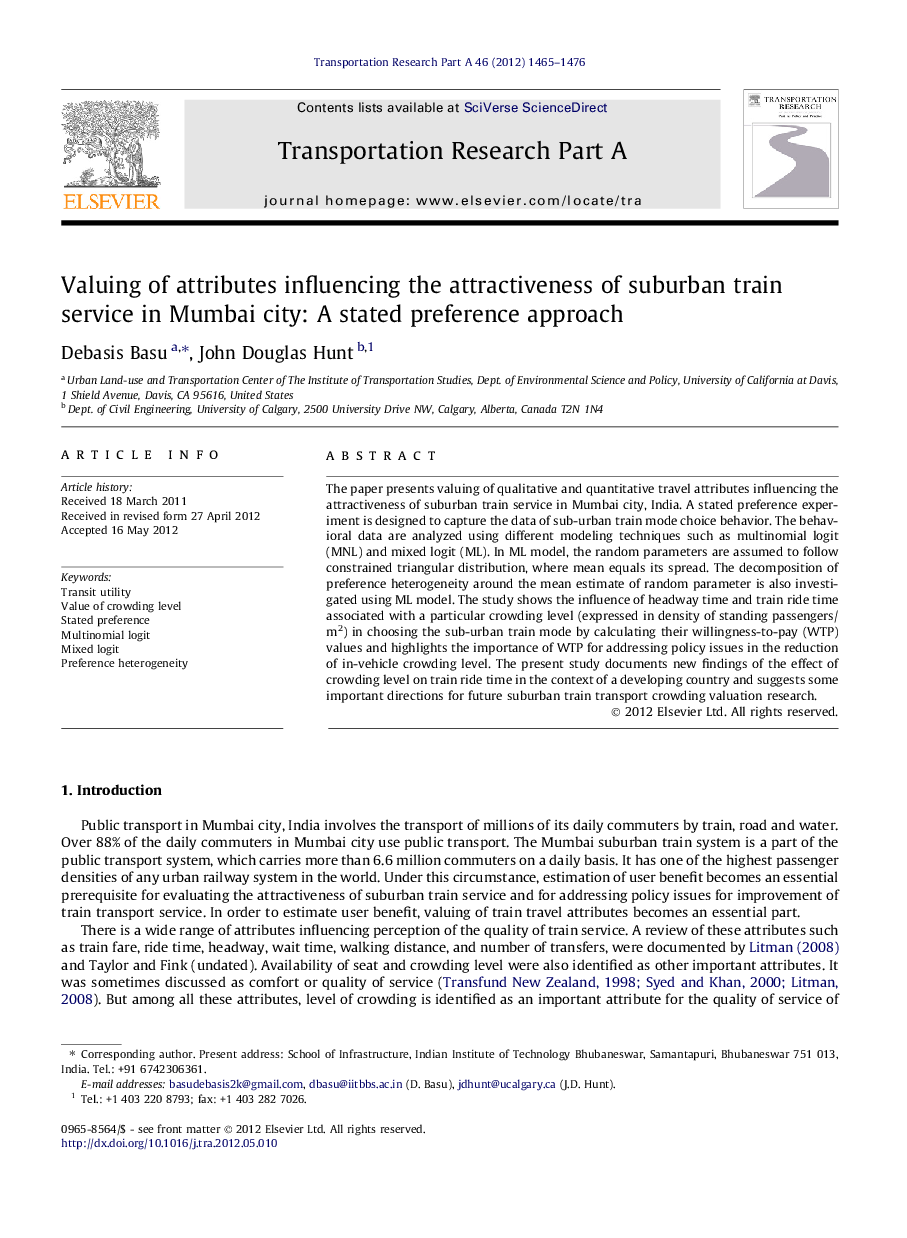| کد مقاله | کد نشریه | سال انتشار | مقاله انگلیسی | نسخه تمام متن |
|---|---|---|---|---|
| 311313 | 533797 | 2012 | 12 صفحه PDF | دانلود رایگان |

The paper presents valuing of qualitative and quantitative travel attributes influencing the attractiveness of suburban train service in Mumbai city, India. A stated preference experiment is designed to capture the data of sub-urban train mode choice behavior. The behavioral data are analyzed using different modeling techniques such as multinomial logit (MNL) and mixed logit (ML). In ML model, the random parameters are assumed to follow constrained triangular distribution, where mean equals its spread. The decomposition of preference heterogeneity around the mean estimate of random parameter is also investigated using ML model. The study shows the influence of headway time and train ride time associated with a particular crowding level (expressed in density of standing passengers/m2) in choosing the sub-urban train mode by calculating their willingness-to-pay (WTP) values and highlights the importance of WTP for addressing policy issues in the reduction of in-vehicle crowding level. The present study documents new findings of the effect of crowding level on train ride time in the context of a developing country and suggests some important directions for future suburban train transport crowding valuation research.
► Work documents new findings on the attractiveness of sub-urban train service.
► Attempt has been made to measure the effect of crowding level on train ride time.
► Crowding level is expressed in density of standing passengers/m2.
► Heterogeneity in the perception of travel attributes is investigated.
► Constrained T-distribution is assumed for random parameters in mixed logit models.
Journal: Transportation Research Part A: Policy and Practice - Volume 46, Issue 9, November 2012, Pages 1465–1476